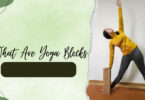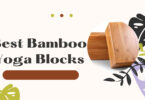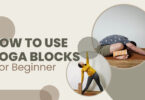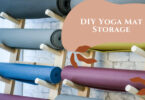Yoga pants, check; mat, check; water bottle, check….
What about your yoga shoes?
If you are like any yogini out there, you must not be that particular about your shoes. This is because yoga is often practiced barefooted or with random sports shoes.
But yoga can be quite a balancing act when it comes to footwear.
You need your shoes to be comfortable and supportive, but also lightweight and flexible enough that you can move around freely during practice. It’s also important that your shoes provide traction, so you don’t slip on the studio floor or get injured if you’re practicing in the great outdoors.
With these considerations in mind, I have listed some tips to help you choose the right yoga shoes for women.
Let’s get started.
WHICH BRAND CAN WORK FOR YOU
The best yoga shoes out there are usually high-quality brands. Some brands that you may want to keep an eye on including Nike, Vibram, and NBERA. Each of these brands has a large variety of yoga shoes available in lots of different styles, colors, and prices.
However, not every shoe brand feels the same for everyone. Maybe one brand ensures a good grip, while another one might be suitable for hot yoga. The goal here is to find one that can complement your specific yoga practice.
Here I have listed some highly recommended women’s shoes for yoga.
Nike Grip Studio
Technically, this product is a toeless sock, but its functions make them qualified enough for the category of shoes.
These socks by Nike are specially designed for yoga, pilates, or any other studio classes. They can support the various movements involved in yoga. With their open design, your feet can stay cool and grounded. Plus, there is extra cushioning provided for the forefoot for improved comfort.
Spenco
Spenco Yoga Stretch shoes have everything to impress the yogis, from a cushion, support, and flexibility to breathability. Does it support the movement of the heel, toe, and ankle?
Yeah, Spenco perfectly does it. Thanks to its durable material, and smart design.
Vibram Five Fingers Women’s V-Soul Shoes
These are the cross between a yoga sock and barefoot athlete’s shoes. They ensure breathability, to increase breathability while the foam-cushioned soles are there to provide comfort and flexibility for any yoga posture.
FitKicks Foldable Barefoot Yoga Shoes
These foldable shoes offer great versatility for a range of physical activities. And yoga is no exception. They have a flexible sole while the upper side is made of spandex, meaning that you can easily bend your feet in your yoga posture. The toe guard is there to maintain your foot alignment while the bottom ensures a good grip. As an added bonus, their slip-on style and “easy” pull make them super simple to put on before your yoga practice.
NBERA by 2econdskin Durable Outsole Barefoot Yoga Shoes
Another hybrid of a sock and shoe, these yoga shoes have a great cushion so that you can stay comfortable and flexible while practicing on a hard surface. Moreover, they are lightweight and dry quickly.
UNDERSTAND YOUR FOOT TYPE
Do you know what your foot type is? The foot type is categorized into neutral, high-arched, and flat feet.
People with neutral feet are a bit of an outlier because they can accommodate a variety of styles. People with neutral feet usually wear whatever shoe feels most comfortable or helps them ergonomically move through a yoga class. They may also change up their shoes based on their activity.
A glance at a store shelf can help you determine whether something is meant for your foot type, but many athletic stores offer staff fitting services if you want to be sure.
CONSIDER YOUR FEET SIZE
If you’re not sure about your size, visit a yoga store and try on a few pairs. Make sure you’re wearing socks because a big part of choosing comfort is making sure there isn’t extra room in your shoe.
It should fit snugly around your foot and have no more than half an inch of space from your heel to your toes.
If you feel wiggling room anywhere, don’t buy that pair—you won’t be happy with them. Finally, make sure you can bend down without taking off your shoes or stepping out of them, which are both no-nos during yoga class.
CHECK THE FLEXIBILITY
As a woman, your foot and ankle anatomy are different than that of a man’s, so you need to make sure that your shoes cater to women’s needs.
Every shoe company out there has at least one women’s specific model—look for a neutral or stable shoe with a low-to-the-ground feel. The goal here is flexibility; you want your foot and ankle joints to be able to move as freely as possible.
If you wear high heels regularly, look for something with plenty of arch support and padding in areas prone to bruising (such as along your heel). Again, don’t go too far overboard; it’s better if there’s just enough padding instead of too much.
AFFORDABILITY
The price of yoga shoes for women can be very different, even between popular brands.
If you’re looking for a new pair of yoga shoes, it’s always best to go into your purchase with a budget in mind and do some research before making your choice.
You might not be able to find a high-quality product at a low price, but you also don’t want to pay top dollar for an item that’s nothing special.
Before buying yoga shoes from an unfamiliar brand, do your homework on their quality so you know what type of product you’re getting for your money. Remember: It’s all about value!
The Conclusion
Choosing the right yoga shoes can make a difference to your balance, flexibility, and “connection” to the ground during your yoga practice.
If you wear the wrong one, you are likely to experience a host of challenges like slipping, tripping, poor balance, and limited motion.
From your foot size, and foot anatomy to style preferences, there are a lot of factors to consider when buying the right yoga shoes. Above all, make sure to perform some yoga postures while trying the shoes. Here is a quote by Marilyn Monroe to end this blog on a positive note:
“Give the girl the right shoes, and she will conquer the world.”







